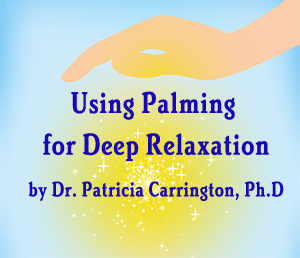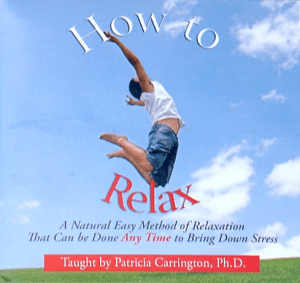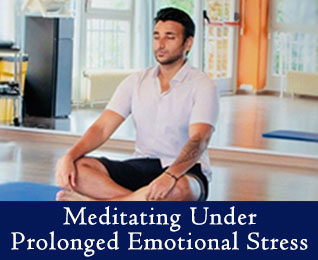 When a pioneering ophthalmologist and renowned surgeon, Dr. William H. Bates, discovered that he could restore seriously threatened vision as well as eliminate common reading problems by using the special forms of eye relaxation which he had developed – and his followers were able to duplicate his results in thousands of cases – this discovery was groundbreaking and his discovery, made in the early 1900’s was so effective that the Bates Method as it is called, is still practiced as an important alternative to glasses or contact lenses for virtually anyone.
When a pioneering ophthalmologist and renowned surgeon, Dr. William H. Bates, discovered that he could restore seriously threatened vision as well as eliminate common reading problems by using the special forms of eye relaxation which he had developed – and his followers were able to duplicate his results in thousands of cases – this discovery was groundbreaking and his discovery, made in the early 1900’s was so effective that the Bates Method as it is called, is still practiced as an important alternative to glasses or contact lenses for virtually anyone.
Most people don’t realize, however, that if you can achieve a complete and natural relaxation of your EYES, you will automatically experience a deep sense of peace and well being and your mood will become one of tranquility.
Because this is not generally realized, little attention has been paid to the therapeutic benefits to our health and our entire outlook on life, if you can totally relax your eyes.
I want to call your attention today to a particular eye exercise which Dr. Bates developed called “Palming”.
An amazing example of palming
In his landmark book, Perfect Sight Without Glasses, which sold millions of copies in the United States alone, Dr. Bates describes an astonishing case where palming was used by a man who was near blinded from advanced cataracts. Dr. Bates had told this patient that before he decided on surgery for his cataracts he might want to try palming and suggested he do it several times a day. This patient than returned home and mistakenly believing that he had been instructed to Palm continuously all day long and anxious to avoid surgery he did so although it involved some practical difficulties to keep doing the exercise continuously. To the amazement of the patient he discovered that he could see clearly and easily by the end of that day. He came back to Dr. Bates a few days later and when Dr. Bates tested him, the man looked at the test card, without glasses, and read the bottom line at twenty feet. He also read fine print at six inches and at twenty. The cloudiness of the lens had become much less, and in the center it had entirely disappeared. Two years later there had been no relapse.. Dr. Bates himself was astonished because he had never used palming in that intensive a way.
Although it was not found to have the same effect in many other cases of cataract (i.e. complete clearing of the condition) It can be very beneficial in lightening its effects in certain cases. It also assists eye health in general and vastly improves vision.
Being a psychologist who treats emotional disturbances, I am very familiar with the deeply beneficial effects of profound relaxation in counteracting any form of stress and I am going to teach you here a version of Palming which I have used with great benefits for my clients as an easy and highly effective way to counteract stress throughout the day.
What You Need to Know First
If your eyes are strained this fact can make you feel tense, anxious, fatigued and irritable. This is an important piece of information because in this digital age, eye strain is much more prevalent than in the past, and “As our eyes are, so are we.” is a saying not to be dismissed.
The fact is that realizing the important role of your eyes in relaxation can help you handle every day– even if it’s a very busy workday — with ease and pleasure despite even heavy pressure from your work. Resting your eyes properly can switch your mood to a more positive one in a matter of seconds.
An example:
Natalie had sought my help as a psychologist specializing in stress management because she wanted to rid herself of a troublesome tension build-up that she experienced daily on her job.
She described the problem vividly. It seemed that she would become increasingly tense during the day so that, as the day wore on, she would find herself barely able to continue with her work. At that point she would become exhausted, shaky and irritable.
Natalie’s position as a computer programmer was a very demanding one and she thought this might be one reason for her build-up of tension. In addition, her boss was not easy to work with. It soon became apparent to both Natalie and me however, that there was a PATTERN to her stress buildup which couldn’t be explained by these factors alone.
On questioning Natalie about the use of her eyes (something I regularly do with clients reporting these kinds of stress symptoms) I discovered that she was spending three to four hours at her computer monitor AT ONE STRETCH every single day. At such times she would concentrate so intently on her work that she was scarcely moving a muscle of her body. She described herself as being so fixated on her work that “I don’t want to give myself any pause from it whatsoever.”
Concentrating on a work task can be highly desirable, but it was clear that Natalie was not handling her concentration appropriately. She barely took her eyes off the monitor all day long and this eye and body immobility was having serious repercussions on her emotional stability and physical health — as well as on her eyes.
What Natalie didn’t know until I explained it to her is that the human eye has been carefully designed to adjust to great distances as well as to close-up work. Our ancestors in prehistoric times had to survey the horizon periodically to catch sight of their prey when hunting or to escape from approaching enemies, and this valuable far-sighted capacity of the eyes soon became an inherited trait because it increased primitive people’s chances of survival.
Our cave-dwelling ancestors also had to focus their eyes on close-up tasks as they divided the spoils of the hunt, foraged for tiny berries or nuts, or used tools and instruments — so that near vision also became a valuable attribute and, similarly, an inherited trait. Being able to switch easily from near to far vision and back again became a distinct survival advantage.
For this reason the important ability to switch from near to distant vision and back again has been passed down to us through our genes. Today this same capacity can help us in our survival too, and oddly one of the most important ways it can do this is in terms of our general well being and peace of mind.
I will teach you a very simple exercise which you can use to make use of this survival tool. The method, a variation of “Palming”, as originally developed by Dr. Bates, is simple and comforting and can be learned in just a few minutes.
How Palming Works
Palming works on several levels to handle stress. In addition to giving your eyes a chance to adjust periodically to distant vision, it brings you much needed moments of restful darkness and provides moist heat to comfort your eyes.
You may have read that one of the main functions of the eye-blink is that it periodically shuts out light, and that failure to blink often enough can cause eyestrain. The eye blink also moistens the eyes at intervals so that they don’t dry out as quickly.
When we are relaxed we automatically blink frequently but the frequency of our blinks is a great deal less when we are under stress. Failure to blink a healthy number of times each day can cause eyestrain and this in turn can result in more buildup of emotional tension so that a vicious cycle is set into motion.
Because the Palming exercise I am going to teach you requires that you periodically close your eyes in a special beneficial way, it can greatly help to counteract any problems caused by staring and non-blinking.
Palming also helps the eyes relax because it creates moist heat. If you have ever consulted a physician or chiropractor for a strained muscle you probably know that moist heat is extremely beneficial to tense muscles. When the eye muscles are strained — because the eyes have been held in one place too long a time, for example — they are grateful for moist heat. Palming supplies welcome moisture and a beneficial natural heat which radiates directly from the palms of your own hands.
How to PALM
Please note that I use a slightly different version here than the standard palming method which has you keep your eyes closed, but the original instructions are excellent too and you can find photos of the positions best suited for Palming by going to: http://www.seeing.org/techniques/palming.htm.
I encourage you to view them.
Instructions:
- Sit comfortably with your elbows resting on a desk or table for support. If you lean back in a recliner, or lie down, that works fine too.
- Cover your eyes easily and effortlessly with the palms of your hands. Your hands should be cupped over your eyes so that the palm of each hand is gently covering the eye on the corresponding side (left or right) and shutting out all light. Be sure not to touch your eyelids with your hands or exert pressure on the eyes in any way. Your palms are to form a rounded cup, with the fingers of one hand crossing those of the other hand at their upward pointing tips, so that your fingertips overlap as they point toward the forehead. This allows you to adjust your hands to SHUT OUT ALL LIGHT.
- As you Palm, you may keep your eyes open in the darkness, or you may close them, whichever way feels most comfortable. The moisture and warmth from the palms of your hands will be soothing no matter which you do, but you may prefer one way to the other.
- Now imagine that you are gazing at a distant landscape. Picture a pleasant, calm scene with some peaceful but interesting motion in it. You might see in your mind’s eye a sailboat way out on the horizon and notice the slow rolling motion of the waves beneath it, or you might imagine distant clouds drifting in the sky, or follow some other peaceful far-off image with your eyes. This “distant vision” allows your eyes to accommodate to distances as they naturally long to do at regular intervals during the day, and your mind will automatically slow down as a result. As a result you will find yourself becoming more peaceful and clear headed.
- Palm in this manner for one, two, or even for five minutes, according to the time you have available and how it feels to you.
- When you are ready to stop, close your eyes, if they are not already closed, before you remove your hands. Then gently take your hands away from your eyes and slowly open your eyes — you do not want to shock the eyes by introducing a too sudden blight light after they have been resting so quietly in darkness.
Palming at regular intervals throughout the day, every hour on the hour gives excellent results. It can bring you a sense of deep relaxation that not only will affect your eyes but your whole body, your outlook, and your emotional state as well. It can introduce a sense of ease and balance into the midst of even a hectic workday.
I regularly taught Palming to second year medical students who attended my classes at the medical school. These doctors-in-training have to study a grueling number of hours each day, and their work requires intensive reading. After practicing this simple exercise while they are studying, the students regularly reported that they could work much longer stretches of time without becoming fatigued and were able to concentrate much better on their studies because stress buildup and fatigue is reduced by it. Palming made these students’ medical education noticeably easier.
To get back to our example, Natalie; after she had learned Palming and began to use it regularly throughout the day, she discovered that her exhaustion and tension at the end of the day had virtually disappeared. She found herself more content, more relaxed, and better able to concentrate as a result of introducing regularly spaced periods of Palming into her day.
I strongly recommend Palming to everyone as an essential practice in their daily life. Once you have experienced the relief and increased stamina that Palming can bring to you, you will welcome this gentle “escape” from the pressures of the world. It more than makes up for the few minutes time it takes out from your day, in increased productivity and clear headedness.
It is particularly important, however, for you to Palm regularly during the day if you work long hours with a computer, or are confronted by large amounts of paperwork, or engage in some other form of close-up work for prolonged periods of time. It is also extremely useful to Palm if you just feel TENSE, for no apparent reason, during the day. Despite its simplicity and ease, Palming is one of our most powerful stress reducers. Begin using it now!
DOWNLOAD THE EYE MAGIC FOR DEEP RELAXATION E-BOOK
RELATED RESOURCES:
 The How to Relax audio differs from most other relaxation training in that it does not teach you how to relax while sitting or lying down, but while you are in action. It shows exactly how to relax unessential muscle groups while retaining tension in those muscles used especially for a particular activity. This is what a skilled athlete does, or an animal loping along at high speed. The result is an unusually useful training that can benefit us all.
The How to Relax audio differs from most other relaxation training in that it does not teach you how to relax while sitting or lying down, but while you are in action. It shows exactly how to relax unessential muscle groups while retaining tension in those muscles used especially for a particular activity. This is what a skilled athlete does, or an animal loping along at high speed. The result is an unusually useful training that can benefit us all.
Releasing with Pat
“The releasing technique is one of the most powerful self-help techniques available for conquering stress and increasing personal effectiveness…”![]()





